Restored Historical Sites to Visit in Egypt
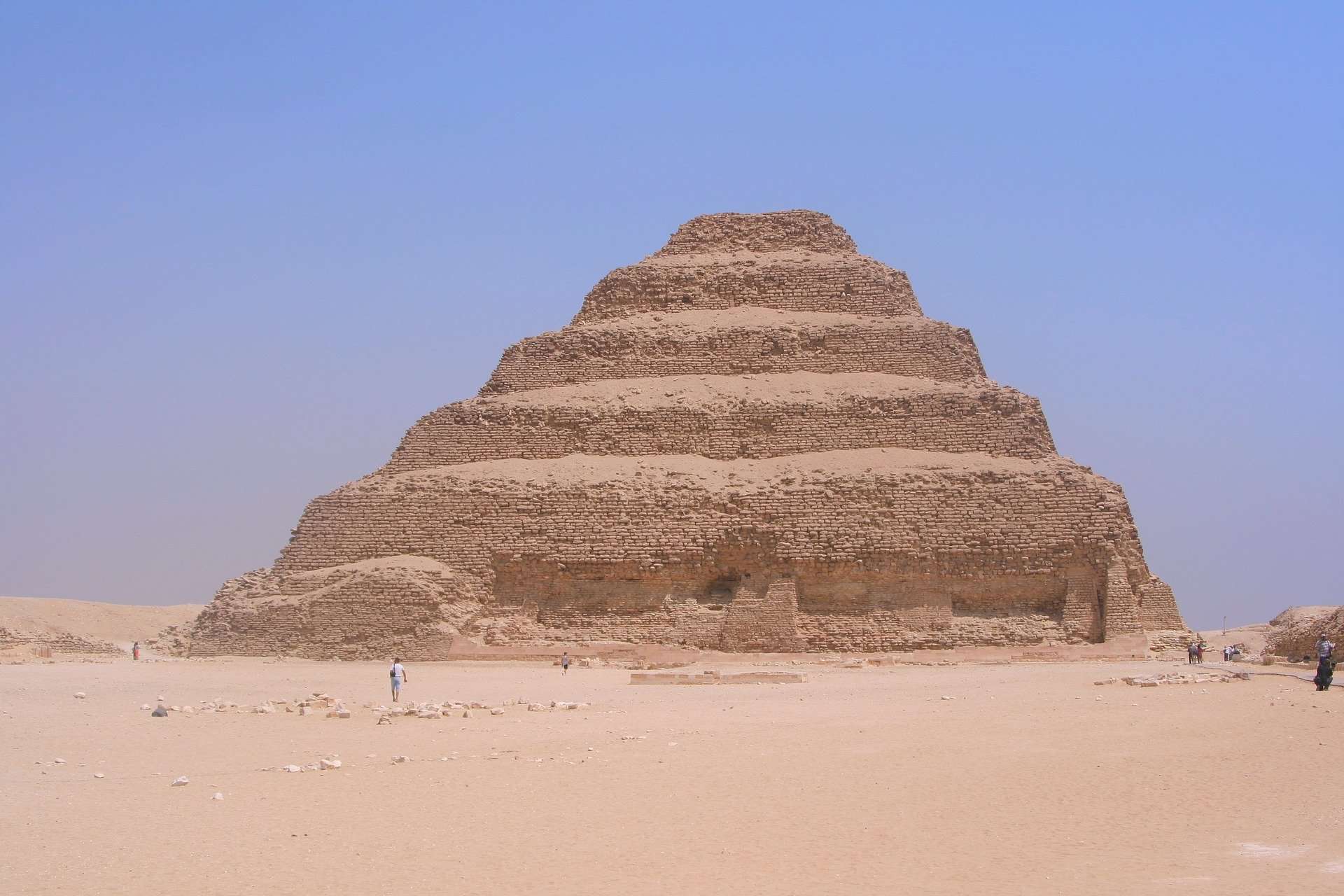
Updated On: April 23, 2024 by Dina Essawy
Over the past few years, Egypt has undertaken major projects to restore and preserve many of the historical landmarks around the country to restore them to their former glory. Many of these landmarks are well-known and have attracted tourists from all over the globe, so it was only natural to make sure they were well-preserved and looked after in keeping with the architectural styles of the eras in which they were built.
Some of these landmarks are located in Cairo, specifically in the district of Old Cairo, where many ancient monuments can be found.
The Egyptian government is currently undergoing a major project to renovate the entire district in order to create a magnificent tourist attraction as well as preserve these amazing landmarks that have stood the test of time. The project was explained during the grand inauguration celebration of the National Museum of Egyptian Civilization.
Here are some of the locations you can visit today.
Ain el-Sira Lake and the National Museum of Egyptian Civilization in Fustat
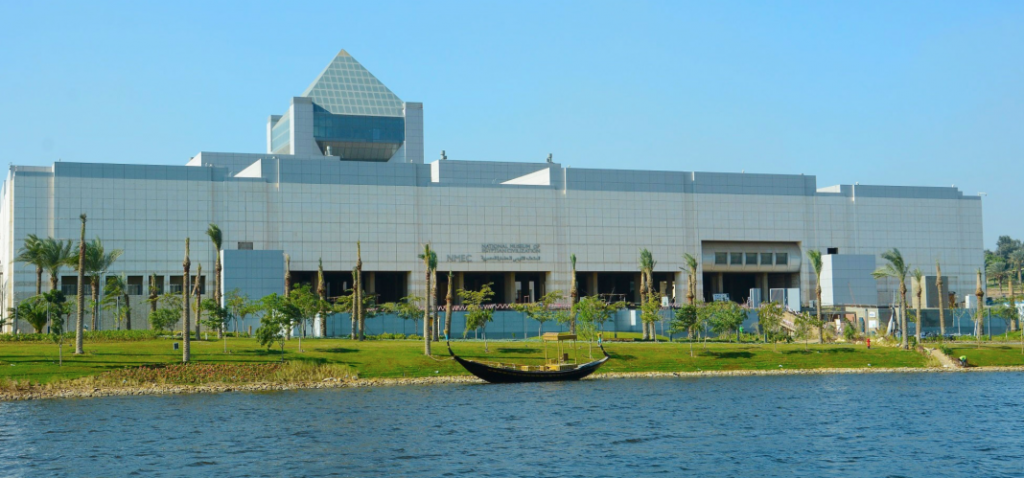
In the district of Old Cairo, the Ain el-Sira historic area was turned from a slum to a beautiful lake area surrounded by cafés and one of the biggest museums in Egypt, the National Museum of Egyptian civilization which was inaugurated on April 3rd, 2021, in a grand celebration witnessed by the entire world that included the transfer of twenty-two royal Egyptian mummies of Kings and Queens from the Egyptian Museum in Tahrir to this new museum. The mummies now rest in a special hall that was created specifically for them, resembling ancient Egyptian tombs, similar to those in the Valley of Kings in Luxor.
The museum displays 50,000 artifacts, from the Egyptian civilization from prehistoric times to the modern day. The museum is divided into grand halls, the Main Hall which displays Egyptian heritage from prehistoric times to Pharaonic, Greco-Roman, Coptic, Islamic eras to modern-day.
The Ain el-Sira project spans an area of 63 acres which also includes a restaurant area, an open-air theatre, green landscapes, wooden pergolas, fountains, and a purification plant for lake water.
Ain el-Sira lies in Old Cairo, part of Fustat, the ancient capital of Egypt that is now part of Greater Cairo.
The National Museum of Egyptian Civilization is open from Saturday to Thursday, from 9:00 am to 5:00 pm, and on Fridays, it opens from 9:00 am to 5:00 pm and from 6:00 pm to 9:00 pm. Tickets for Egyptians and Arabs are EGP 60 and EGP 30 for students. Tickets for foreigners are EGP 200 and EGP 100 for students.
Djoser Step Pyramid (Saqqara) in Giza
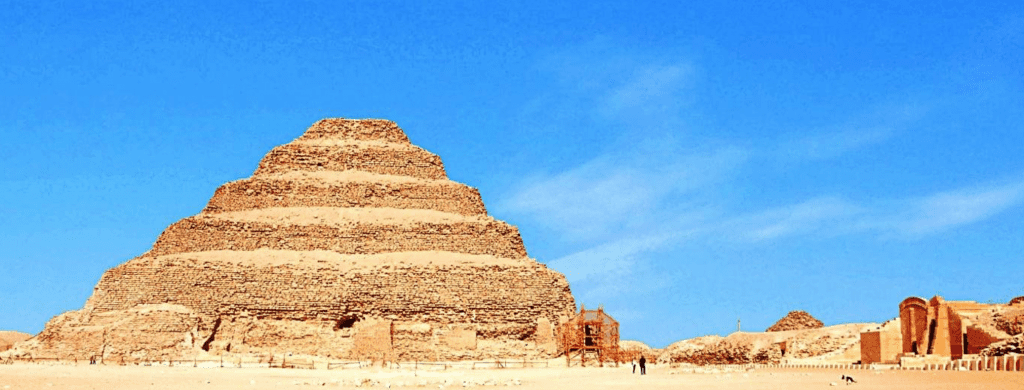
The Djoser Step Pyramid is named after Djoser, the first king of the 3rd Dynasty in ancient Egypt, and designed by Imhotep, a brilliant architect, physician, high priest of the sun god Ra and grand minister, who was so ahead of his time that he later became glorified as the god of Medicine. It is the last remaining landmark from the Saqqara Necropolis; a large system of cemeteries spanning the modern cities of Dahshur, Giza, and Abusir that were built in 2700 B.C. The construction is the first and oldest surviving complete stone building in history.
The pyramid of Saqqara was once again reopened to the public in March 2020 after major restoration work had been carried to regain its glorious state.
The area is open from 9:00 am to 5:00 pm and tickets are 60 EGP and 30 EGP for students.
Kom el-Shoqafa Catacombs in Alexandria
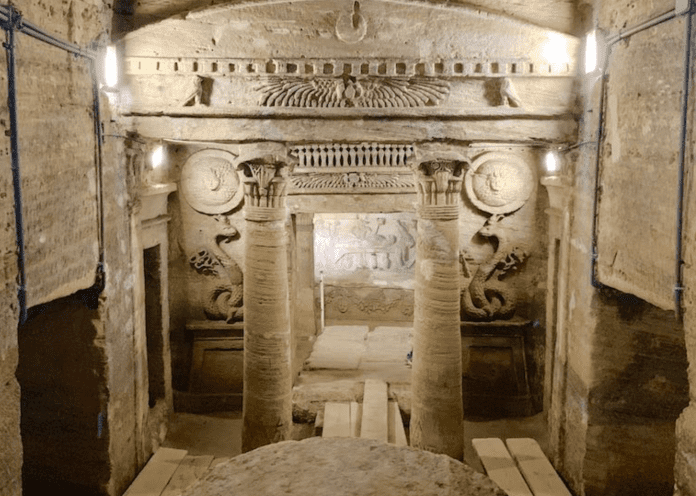
The groundwater lowering project at Kom el-Shoqafa that was completely submerged underwater is one of the most intricate projects recently undertaken in Egypt. This significant area in Alexandria is a well-known archaeological site and is considered one of the Seven Wonders of the Middle Ages. It contains several tombs and antiquities dating back to the pharaonic era, with infusions and influences from the Hellenistic and Roman eras as well.
A circular staircase leads down to the tombs where you’ll find a burial chamber dating back to the 2nd century to the 4th century, before being rediscovered in 1900 when a donkey accidentally fell into the access shaft.
In 2019, the monument reopened after archeologists successfully managed to prevent the rising water levels from destroying the endangered tombs and now you can enjoy the beautiful location and marvel at the vivid inscriptions decorating its walls.
The area is open every day from 9:00 am to 5:00 pm.
Eliyahu Hanavi Synagogue in Alexandria
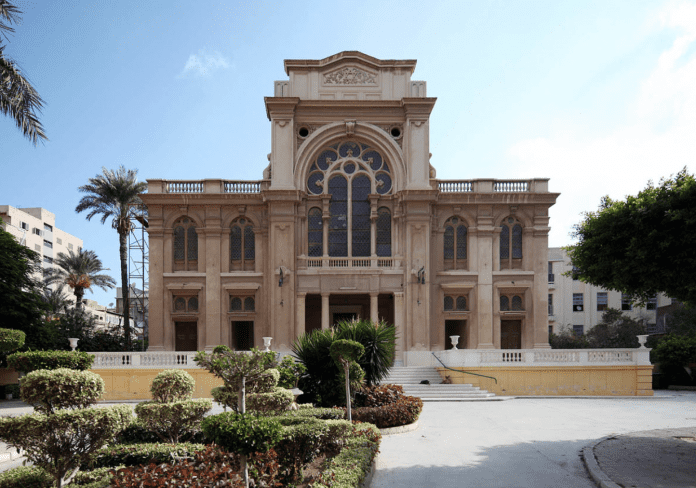
The Eliyahu Hanavi Synagogue is in Nabi Daniel Street in the city of Alexandria. The synagogue was built in the 1850s by an Italian architect on the site of a former 14th-century synagogue that was destroyed during Napoleon’s conquest of Egypt in 1798.
The synagogue is one of the largest in the Middle East, accommodating 700 worshipers. In 2017, a project was announced intending to restore the synagogue to preserve Jewish heritage in Egypt with a budget of 40 million EGP and it was reopened in January 2020.
The interior of the synagogue features massive marble columns and original brass nameplates on the seats of the regular male worshipers. At the front of the building, there is a closed chamber that holds 30 Torah scrolls.
(Saint Virgin Mary Church) in Cairo
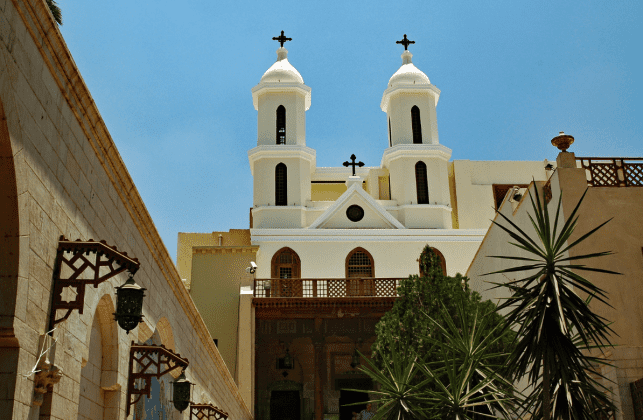
One of the most important attractions in Cairo, the Hanging Church earned its name from the way it was built; over a passageway between two turrets adjoining Babylon Fortress, a Roman fortress dating back to the 2nd century AD. It is one of the oldest churches in Egypt as it was built in the 5th century AD and it contains the remains of several saints, as well as 110 rare icons hanging on its walls.
The church was the first official seat of the Pope of Alexandria after being relocated from Alexandria to Cairo. The church was renewed several times during the Islamic era, and once during the reign of the Abbasid Caliph Harun al-Rashid, then the Fatimid caliph’s al-Aziz Billah, and in the era of Al Zaher le-Ezaz Din Allah.
The place where the church was built also served as a shelter for the Holy Family as they escaped from Herod, the King of Palestine at the time. Inside the church, there are several icons dating back to different historical periods, including the painting dubbed as the ‘Christian Mona Lisa’, featuring Jesus, the Virgin Mary, and John the Baptist and as you look at it from any angle, you’ll notice that Mary’s eyes follow you.
There are many legends and miracles related to this church, the most famous of which is the moving of the Moqattam Mountain. It is said that the Fatimid Caliph Al-Mu’izz asked Patriarch Abraham (975-978), the 62nd Patriarch, to move the Moqattam Mountain to prove the words of the gospel “If you have faith the size of a mustard seed, you shall say to this mountain: Remove from hence to yonder place, and it shall remove“ (Matthew 17-20). The Patriarch spent 3 days praying in front of the painting of the Virgin Mary until she appeared to him in a vision and told him what to do.
The church underwent major reconstruction of both the lower shrine and the infrastructure of the church and it reopened to the public in October 2014.
Saints Sergius and Bacchus Church (Abu Serga) in Cairo
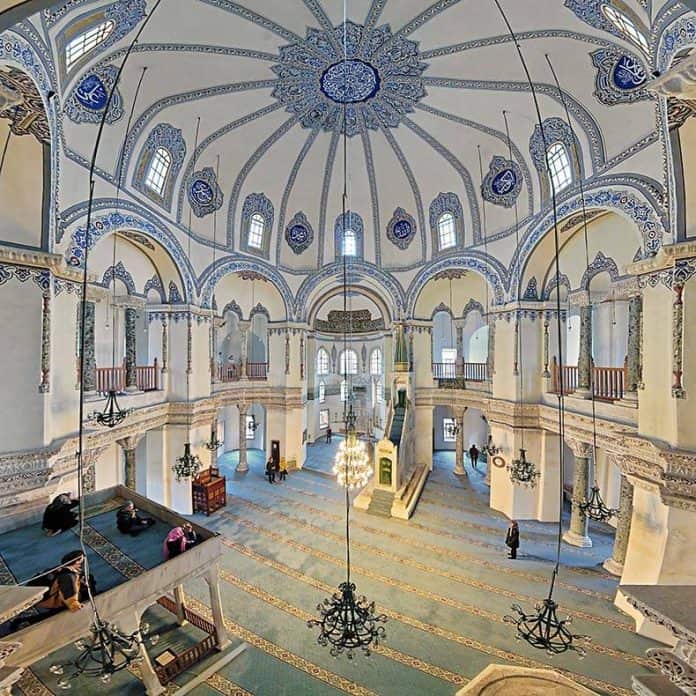
The church’s importance comes from the fact that it was one of the stops on the Holy Family’s journey in Egypt in a cave that can be found beneath the church, which means it is also one of the oldest Coptic churches in Egypt as it dates back to the 4th century.
It is a Basilica-style church and it is where many patriarchs of the Coptic Church were elected. The church is dedicated to soldier-saints named Sergius and Bacchus; who were martyred during the 4th century in Syria by the Roman Emperor Maximian.
The church underwent many restorations throughout its history; first when it burned down in 750. The most recent restoration took place in 2016, after which the church once again opened to the public.
Al-Azhar Mosque in Cairo
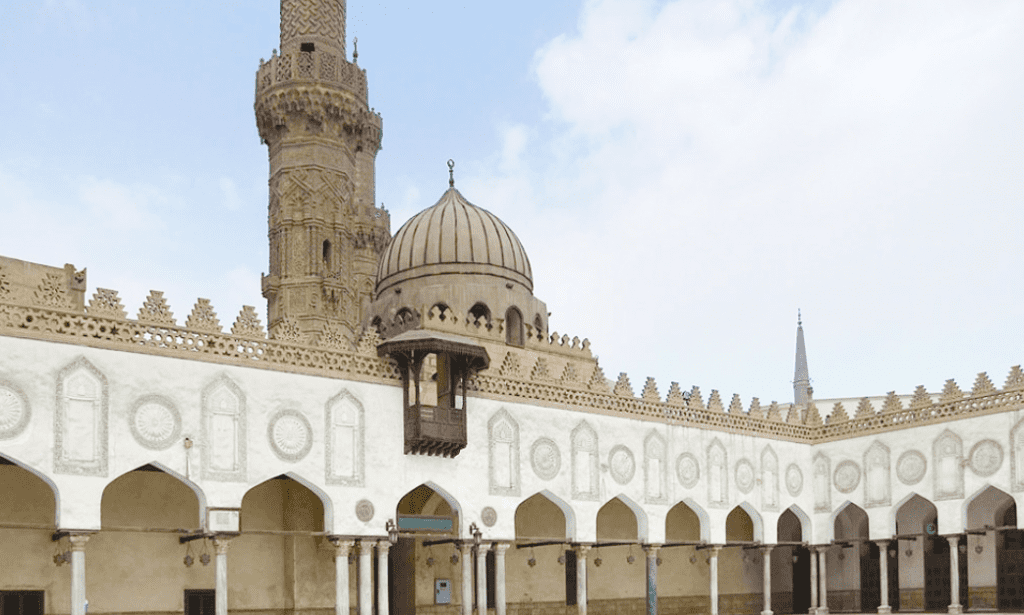
Built in 970 AD and opened in 972 AD during the Fatimid era, Al-Azhar is one of Cairo’s oldest mosques. It is now located in the district of Old Cairo and the architecture of the mosque presents a harmony between different styles due to several expansions over 1000 years.
The oldest section of the mosque is the central courtyard while the minarets date back to the 14th, 15th, and 16th centuries.
An early university was established and attached to the mosque in 988 AD and is considered the world’s second-oldest educational institution. At one time, it was one of the world’s leading centers of learning, drawing students from Europe and all over the Islamic world.
The mosque is so unique and historically significant that it was visited by multiple foreign dignitaries over the decades, including Barack Obama, Princess Diana, King Salman of Saudi Arabia, Crown Prince Mohammed bin Salman of Saudi Arabia, Prince Charles, Camilla Parker Bowles, and the President of Portugal, among many others.
A restoration project of the mosque took place between 2015 and 2018, after which it was inaugurated in March 2018.
Museum of Islamic Arts
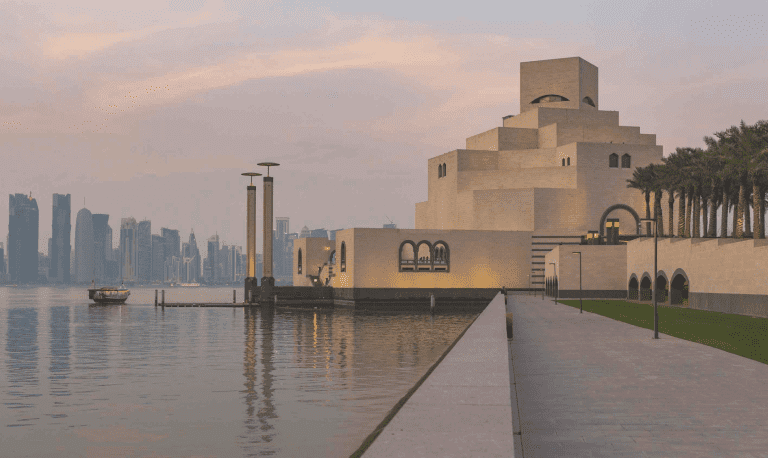
The Museum of Islamic Arts contains the world’s largest collection of Islamic treasures and antiquities. Although the museum houses more than 100,000 objects, it only displays 4,500 artifacts displayed in 25 Halls, including rare manuscripts of the Qur’an, a large collection of Arabian carpets, various intricate wooden objects, Islamic ceramics, a lamp collection, and much more.
The Museum has also conducted excavations in the Fustat area and has organized several national and international exhibitions.
The museum has two entrances and a beautiful garden with a fountain. The entrance from Port Said Street has a very luxurious facade, rich with decorations inspired by Islamic architecture in Egypt from different periods. The museum has two floors, the lower floor contains the exhibition halls and the upper floor contains the general stores.
In 2014, the museum was attached and its façade was damaged along with 170 of its artifacts, after which it was restored and reopened in 2017.
The museum is open from 9:00 am to 5:00 pm all week, except Fridays when it opens from 9:00 am to 11:30 am and then from 1:30 pm to 5:00 pm.
Al-Fath Mosque in Cairo
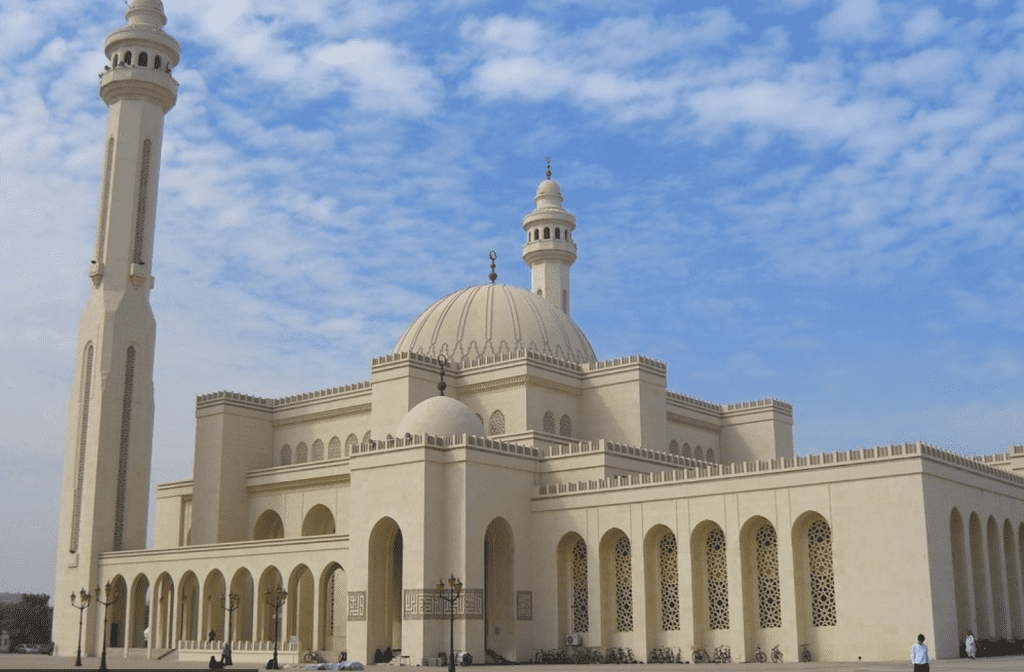
Al-Fath Mosque lies in the Abdeen district and is attached to the magnificent Abdeen Palace and was the mosque where the Kings of Egypt living at the palace used to pray. Founded by Prince and Major-General Abdeen Bek, it is a great example of Islamic architecture and art.
The main facade of the Al-Fath Mosque overlooks the Abdeen Palace gardens. In the middle of the western side of the mosque is the royal entrance for the mosque.
The mosque underwent a complete restoration process that cost 16 million EGP to restore it to its former glory. The restoration included the interior of the mosque and the marble floor in the courtyard, the mihrab, the marble and granite columns, as well as the interior domes. After three years of renovations, it reopened in 2020.
The Royal Chariots Museum (Royal Vehicles Museum) in Cairo
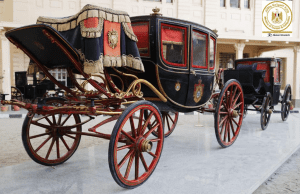
The Museum of the Royal Chariots is located in Boulak in Cairo and it displays the royal vehicles previously owned by the family of Muhammed Ali, the founder of modern Egypt and the rulers of Egypt for hundreds of years until 1952.
The museum was established in the late 20th century by Khedive Ismail to display the royal carriages and horses as well as the expensive cars and automobiles owned by the family from different world-class brands like Citroen, Ford, and Cadillac.
The museum is divided into different halls, the first of which is the Antikkhana Hall showcasing the carriages and vehicles that were gifted to the royal family. The second is the Gamallon Hall; an open-air hall in which the rarest types of vehicles are displayed, such as the Alay chariot, a horse-drawn carriage manufactured with certain specifications to transport kings and senior officials.
The third is the Royal Events Hall, which includes the carriages used by members of the royal family during various official occasions, as well as various beautiful oil paintings of members of the royal family. As for the fourth hall (Hosan Hall), it exhibits the clothes of stablemen, and a set of special accessories used to decorate the horses in the fifth hall. There is also a Reception Hall with a display screen that plays documentaries on the history of Egypt and its last royal family.
The museum exhibits around 78 valuable royal vehicles, 22 of which are carriages that were gifts from kings and emperors of Europe presented to the rulers of Egypt since the reign of Khedive Ismail and until the ruling period of King Farouk, such as the carriage gifted by Napoleon III and Queen Eugene to Khedive Ismail on the occasion of the inauguration of the Suez Canal in 1869, as well as the Cuban carriage that was used by the Queen of Egypt and other notable family members during the opening conference of the Egyptian parliament.
The most recent restoration of the museum building took place in 2017 and cost an estimated EGP 63 million and it was inaugurated again in 2020.
The Museum of Royal Carriages is open every day from 9:00 am to 2:00 pm. Tickets are EGP 100 for adults and EGP 50 for students (foreigners) and EGP 20 for adults and EGP 10 for students (Egyptians).
Baron Empain Palace in Cairo
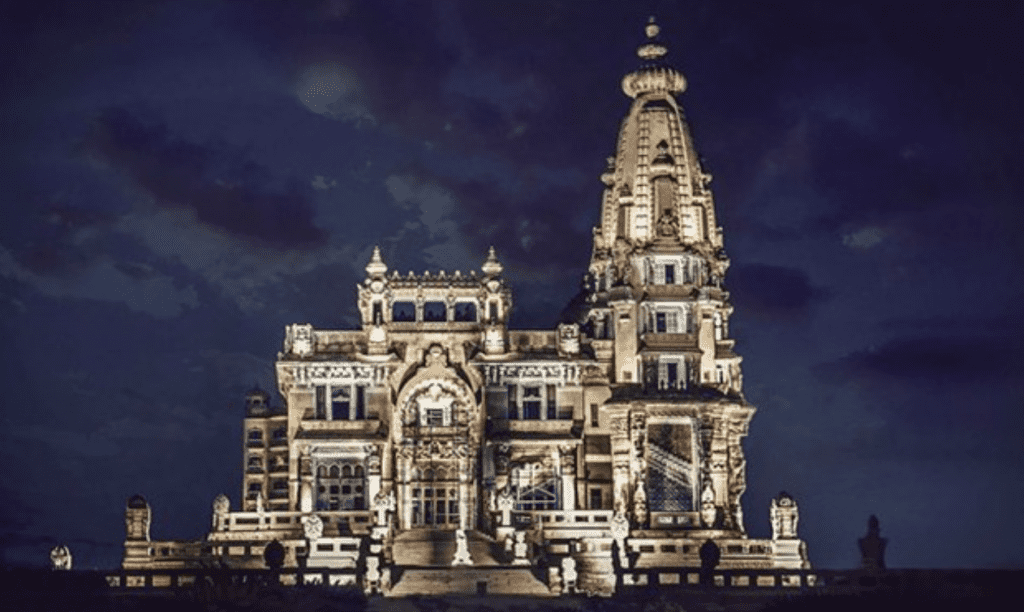
The Baron Empain Palace is a well-known Hindu-style palace in the district of Heliopolis in Cairo. The palace was designed by the architect Alexandre Marcel with a rotating base in order to access the sunbeams at all hours of the day. The palace was decorated by Georges-Louis Claude and was built between 1907 and 1911.
Baron Empain, a Belgian industrialist and colonial entrepreneur millionaire, came up with the idea to build this palace in the then-empty district of Heliopolis, inspired mostly by the Hindu temples of Orissa in India and Angkor Wat in Cambodia that he saw on his travels.
The exterior features statues of Hindu deities, as well as mythical creatures, and elephants. The interior was decorated with frescoes, gilded doors, and Belgian mirrors. Empain lived in the palace’s main tower, which was built on a revolving base to allow a 360-degree view and constant sunlight.
After being closed for two years for restoration that cost about 175 million Egyptian pounds, the palace was officially inaugurated as a tourist destination and a venue for exhibitions on the history of Heliopolis.
The project included restoring the marble columns and frescoes above the main entrance as well as the statues and sculptures and shoring up doors and windows.
The tour of the palace takes 45 minutes, and visiting times are from 9:00 am to 4:00 pm. The ticket is EGP 100 for foreigners, EGP 50 for foreign students, while Egyptians pay EGP 20, and EGP 10 for Egyptian students. All Egyptian visitors who are 60+ years old will be exempted from the entry fee.
Tahrir Square in Cairo
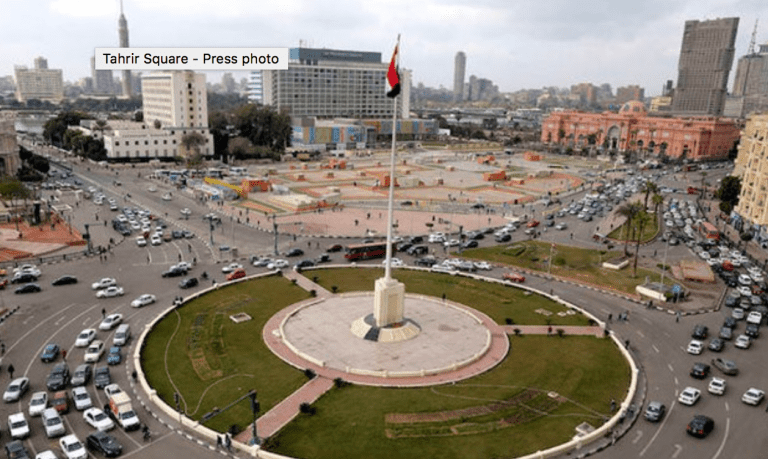
Tahrir Square is perhaps the most famous square in Cairo, located at the heart of the city and surrounded by the Nile on one side and the Egyptian Museum on another.
The area where the square is located was originally developed in the 19th century during the reign of Khedive Ismail. The layout of the square changed many times over the years, but it went through the most recent renovations in 2021 until it was unveiled during the Golden Royal Mummies Parade as the 22 royal mummies were transferred from the nearby Egyptian Museum to the National Museum of Egyptian Civilization in Fustat. The parade went through the square as it was brilliantly illuminated, along with the building surrounding it, to welcome the oncoming parade and pay respect to the ancient Kings and Queens of Egypt.
An obelisk was erected in the center of the square surrounded by statues of sphinxes transferred from Luxor to give the square a distinct ancient Egyptian vibe.
Sphinxes Avenue in Luxor
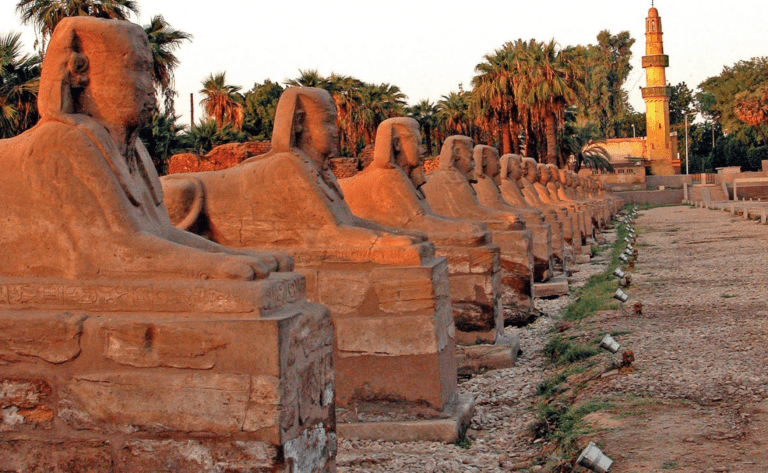
The Avenue of Sphinxes is a well-known 3-km passageway connecting the temples of Karnak and Luxor in the city of Luxor in Upper Egypt. This special road was used by ancient Egyptians every year during the Opet festival as they paraded along the avenue carrying the statues of Amun and Mut in a symbolic re-enactment of the marriage of the two gods.
The construction of the Avenue of Sphinxes began during the New Kingdom in ancient Egypt and it was completed during the reign of the 30th Dynasty. On either side of the avenue, there were around 1,350 sphinx statues at one point in time.
The avenue was renovated during ancient Egypt, by the Ptolemaic Queen Cleopatra, and it was later used by the Romans. Recently 850 sphinx fragmented have been discovered along a section of Sphinx road built Amenhotep III in the 14th century B.C.
Now, visitors in Luxor will be able to enjoy this spectacular avenue in all its glory after extensive renovations have been carried out to repair the damage that had been inflicted on it over the years.
Egypt has not only restored previous landmarks and antiquities but many other constructions have also been added to display its vast treasures, such as the new Sharm El-Sheikh Museum, Hurghada Museum, the Giza Pyramids Plateau which now includes restaurants and cafes to welcome guests enjoying the Pyramids of Giza, the Grand Egyptian Museum which is one of the biggest cultural projects in the world and is expected to open in 2021, as well as Egypt’s Capitals Museum which displays the history of the different capitals of Egypt throughout its history.
Many archaeological discoveries have been made recently as well, some of which have been covered by a Netflix Documentary titled Secrets of the Saqqara Tomb, recounting how a team of Egyptian archaeologists discovered the never before explored tombs in the Saqqara necropolis, including the tomb of Wahtye, a high-ranking priest who lived during the 5th Dynasty, hailing it as one of the most important ancient Egyptian discoveries in history.
Egypt never ceases to amaze us with its long and rich history and its vast collections of antiquities filling hundreds of museums around the country. We recommend exploring some of the aforementioned locations and enjoying all that they have to offer.






